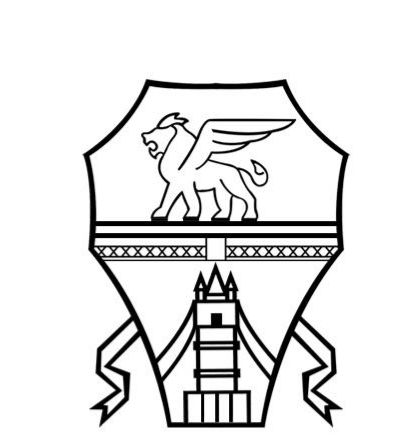NFTs also known as Non-Fungible Tokens have taken the world of cryptocurrency by storm, Celebrities even well renowned companies everyone is talking about launching their own NFTs. But not every NFT is made equal while some are worth a fortune, some can be worthless.
Without a doubt Non-Fungible Tokens are one of the most popular trends in the crypto community right now. Celebrities even respected companies are taking an interest, everyone is talking or even planning about launching their own NFTs. But It isn’t that easy, while some NFTs are worth a fortune, some are practically worthless. Let’s look at some of the profitable ways companies and innovative minds are making money during the current NFT boom.
1. Digital Works of Art
When it comes to making a profit, individual NFT artworks are one of the most valuable Non-Fungible Tokens to be created.
The history of blockchain Technology and the history of art have taken a tremendous change since the introduction of NFTs, from the NFT work of art called “Everydays: The First 5000 Days” which was sold by a well renowned auction house called Christie’s, this fully digital artwork sold for $69 million the first time ever Christie’s actioned digital artwork. Now you can find NFTs being sold to the highest bidders, such as, Celebrities, Businesses we see people such as Eminem, Tony Hawk and even the CEO of twitter Jack Dorsey take an interest in NFTs
While some people have already raised their concerns that selling what is essentially a link to a picture for millions of dollars can be considered just a front for money laundering, others believe that NFTs are a step forward in the evolution in the world of art.
2. Licensed Collectibles
Tokenizing collectibles seems like the most natural and obvious application of Non-Fungible Token technology. Known brands which were selling physical collectibles such as trading cards can now also sell the same thing in a digital form. Since NFTs can prove their rarity, the price of a digital trading card can be much higher than the price of its physical counterpart.
So far, Collectors cards are by far the most popular type of licensed NFT collectibles. The first NFT sports cards project allowed people to trade licensed cards of footballers, but recently the NBA has also launched its own NFT card collection. It’s more than likely that other organizations will soon follow suit, and collectors will be able to buy other sports NFT cards as well.
3. NFT Video Games
NFT-based video games could very well be the future of NFT technology. So far, not one of the games utilizing Non-Fungible Tokens have been able to gain widespread popularity, but the potential of applying NFTs to video games seems immense.
Gamers are already known to spend their hard-earned money on virtual items and currency such as Fortnite V-bucks, Call of Duty loot boxes or FIFA coins — These markets are already worth billions. So, imagine any major video game company decides to sell in-game items as NFTs, the impact of such a decision on both gaming and blockchain industries would be tremendous.
Non-Fungible Future
Non-Fungible Tokens are way more than just another passing crypto trend. The technology is produces has many unique applications, and the full potential of NFTs is only starting to be explored.
It seems like the NFT rise is only starting as more and more creators and businesses decide to enter the Non-Fungible Token business. The fact that some of most popular NFTs are still just simple images suggests that the market is still very undervalued at this point, the true eruption in NFT popularity may not begin until complex Non-Fungible Tokens are made ,exploring the full potential of the new technology becoming more popular.
How to Sell NFTs?
NFTs are generally sold on marketplaces with different processes depending on the platform of your choice. Essentially, you’ll upload your content to the marketplace, and turn it into an NFT, and wait for it to sell. It’s very similar to. If you already eBay or Amazon have a digital content portfolio for which you own the exclusive copyright, this is what you need to do next:
1. Select Your Marketplace, Mint the NFT, and Link Wallet
There are multiple of marketplaces for you to choose from. These include OpenSea, Axie Marketplace, Risible, Super Rare, and Mintable. Have a look at any of these marketplaces and select one that best suits your preference.
Your next step is to “mint” the NFT. In simple terms, minting an NFT is the process of turning the digital file into a digital asset or a crypto collectible on the Ethereum blockchain you may not find this easy at first, most, marketplaces will provide a step-by-step guide on how to mint your NFT right on their platform.
Once you’ve selected a marketplace, you’ll have to link your crypto wallet. After, upload your digital file and follow the process on your chosen marketplace. Each platform will have different processes and give you the option to either sell the item as a one-off purchase or earn futher royalties.
What is the Future of NFTs?
The future of any blockchain experiment is unknown. However, experts believe that NFTs are here for the long term and will continue to expand beyond the art, gaming and music empire, especially if wealthy investors continue investing money.
The growth of NFTs can also be credited to its features that can display proof of ownership, show social status, and provide exclusive access, and give real authentication. It allows you complete ownership of your products same way Bitcoin allows you to be in control of your own banking.
So, to conclude.
It’s important to remember that while the process of selling NFTs may be straightforward, it may not be as easy as it seems. Minting your content and selling it will incur marketplace and Ethereum costs which can be considerably high depending on when you’re putting it up for sale. Trading NFTs can come with uncertainty, given the volatility of this young market.




